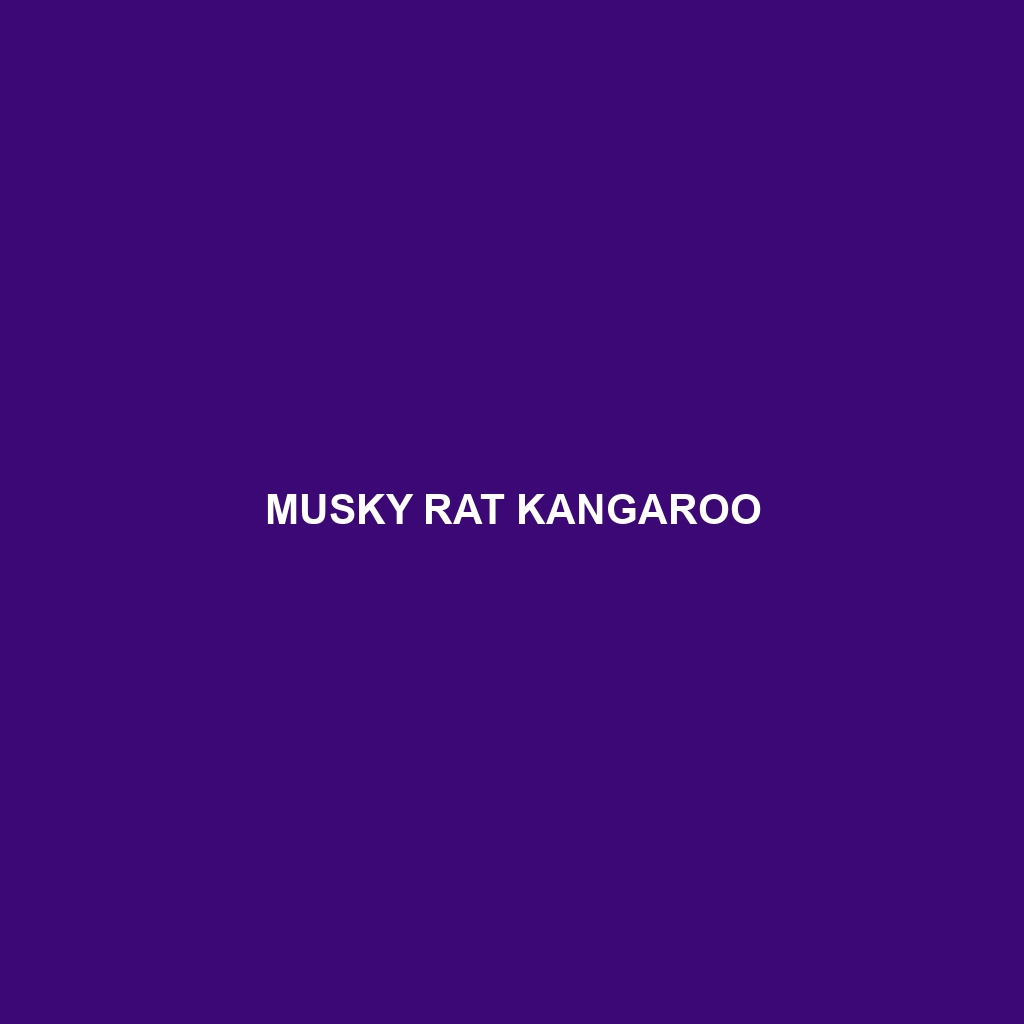Musky Rat Kangaroo: A Fascinating Marsupial of the Australian Rainforest
The Musky Rat Kangaroo (Hypsiprymnodon moschatus) is a small, distinctive marsupial endemic to the tropical rainforests of northern Australia. As the smallest member of the kangaroo family, this unique creature exhibits both primitive and advanced traits, making it an intriguing subject for those interested in evolutionary biology. Named for the musky odor it emits from specialized glands, the Musky Rat Kangaroo plays a vital role in its ecosystem.
Physical Characteristics:
Size: The Musky Rat Kangaroo measures around 23–30 centimeters (9–12 inches) in body length, with an additional tail length of approximately the same size. It weighs between 300 to 700 grams (10.5 to 24.5 ounces).
Coloration: Its fur is typically a rich brown with a slightly lighter underbelly. The tail is less furry and sometimes appears darker than the body.
Special Features: This species has strong, clawed forelimbs adapted for digging and a prehensile tail used for balance and grasping objects. Unlike other kangaroos, it has five toes on each hind foot and quadrupedal locomotion, meaning it moves on all fours.
Behavior:
Social Interactions: Musky Rat Kangaroos are primarily solitary but can sometimes be found in small, loosely associated groups. They communicate with each other using a combination of scent markings and vocalizations, which include clicks and chattering sounds.
Feeding Habits: These omnivores have a varied diet consisting of fruits, fungi, small invertebrates, and even carrion. They are known for their role in seed dispersal due to their habit of caching food.
Ecological Roles: As frugivores and fungivores, Musky Rat Kangaroos play a crucial role in their rainforest habitat by aiding in the dispersal of seeds and spores, which helps maintain the biodiversity of their ecosystem.
Habitats:
Preferred Environment: The Musky Rat Kangaroo inhabits the dense, wet tropical rainforests of northeastern Queensland. They thrive in areas with thick underbrush and ample ground cover, which provide both food sources and protection from predators.
Shelter: During the day, they rest in nests built from leaves and other forest debris, typically located in dense vegetation or within fallen logs.
Adaptations:
Locomotion: Unlike other kangaroos, the Musky Rat Kangaroo moves in a more primitive, quadrupedal manner, which is an adaptive trait for maneuvering through the dense undergrowth of their rainforest home.
Diet and Foraging: Their omnivorous diet allows them to exploit a variety of food sources, and their keen sense of smell helps them locate food in the thick forest floor.
Conservation Status:
Current Status: The International Union for Conservation of Nature (IUCN) currently lists the Musky Rat Kangaroo as a species of “Least Concern.” However, habitat destruction due to logging and land conversion poses ongoing threats to their populations.
Conservation Efforts: Efforts to protect and preserve the tropical rainforests of Queensland are critical for the survival of this species. Conservation programs often focus on habitat preservation and monitoring populations to ensure long-term viability.
Fun Facts:
Evolutionary History: The Musky Rat Kangaroo is considered a “living fossil” due to its retention of primitive traits that provide insights into the early evolution of kangaroos and other marsupials.
Speed and Agility: Despite their small size, Musky Rat Kangaroos are quite agile and can make quick, darting movements to evade predators.
Unique Communication: They possess specialized scent glands that produce a musky odor used for marking territory and communicating with other members of their species.
The Musky Rat Kangaroo is a remarkable example of evolutionary adaptation and ecological importance, making it a fascinating subject for both researchers and nature enthusiasts. Protecting their habitat is essential for maintaining the delicate balance of the rainforest ecosystem they help sustain.
